
FastNCurious
-
Content Count
8 -
Joined
-
Last visited
Content Type
Profiles
Forums
Calendar
Posts posted by FastNCurious
-
-
3 hours ago, Peter Cobbold said:
Tks Ali, pls see correction above, I got it wrong. With a trumpet fitted the mixture should weaken a bit, move to a bigger AFR number. Your richening may be related to the stand-off vapour being captured by the trumpet and not dispersed away from the carb mouth.
I had to delve into SU fludi mechanics when seeking to tune a single HS8 feeding a blower. It took months.
Peter
Thanks Peter, appreciate the clarification. That’s kind of what was baking my noodle - I was also expecting a weaker mix, but now with your latest explanation it makes a lot of sense as to what is happening.
To support your logic: I always wondered why putting on the factory air-box would bring about the same richening effect. I had put it down to a restrictive box or my K&N filter being a little clogged. But then the factory box has built-in 40mm tall trumpets on its back-plate which, I NOW realise, were doing exactly what you have described! Big thumbs up to you sir.
Someone (back in the day) undoubtedly did some maths on their slide rule and came up with 40mm for good reasons!!
 Probably why 40-50mm trumpets work so well on those L6 engines. I’m now thinking that with my (longer than stock duration) cam and tighter LSA, causing more stand-off than stock, it probably would benefit from even longer trumpets. But that’s an experiment for another day with a webcam and some homemade trumpet spacers!
Probably why 40-50mm trumpets work so well on those L6 engines. I’m now thinking that with my (longer than stock duration) cam and tighter LSA, causing more stand-off than stock, it probably would benefit from even longer trumpets. But that’s an experiment for another day with a webcam and some homemade trumpet spacers!
Speaking of intake air velocity, pulses and tuning, here’s a very interesting diagram I saw back in the 90s explaining how the Porsche M64/21 engine with “Varioram“ took care of it. They had it for years before but in ‘95 they added the third chamber. Still, fascinating stuff is this fluid dynamics business!
A - up to 5k rpm
B - between 5k-5.8k
C - above 5.8k
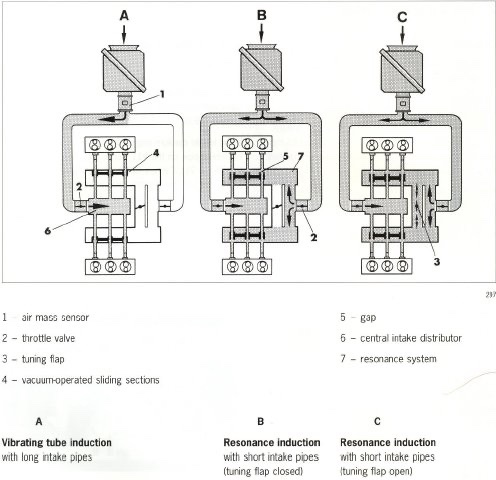
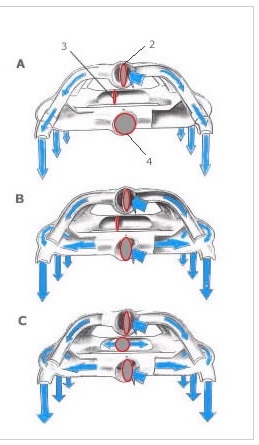
-
5 hours ago, JohnC said:
I can't tell you how much I laughed. Go Norm!

Excellent! Glad to be of service
 2 hours ago, Peter Cobbold said:
2 hours ago, Peter Cobbold said:Ali, The explanation for the richening is complicated. It involves understanding there are two pressure drops between the filter and butterfly. One is at the mouth of the carb and the other is set by the "constant depression " operation of the piston mass plus spring. Fitting a trumpet removes the small pressure drop at the mouth but has only a small effect on the constant depression principle. The trumpet will slightly raise the pressure under the area of the piston that enters the choke tube and carries the needle. Normally this would see the reduced pressure set at the mouth. When a trumpet is fitted that "suction" on the exposed piston is lost and the piston will lift, along with the needle, richening the mixture. The constant depression is a bit less but the bigger fuel area in the jet wins out.
With trumpets the air particle velocity over the bridge drops a bit due the piston riding higher and that tends to non-linearly impair atomisation of fuel and worsen combustion and power. The mass air flow thru the carb will increase marginally as the trumpets remove a fraction of the constant depression. That is calculable from the mouth pressure drop change and the exposed area of the piston. Even so, compared with the pressure drop across the butterfly it will be small.
SUs prefer turbulent flow to avoid creating a venturi effect that would pull the piston down. SU Company as far as I know never advised fitting trumpets, perhaps because they would promote laminar flows and introduce unwanted venture effects.
Peter
Thanks Peter! You really do understand these bits of kit so well. I'm going to read that again carefully later and try to understand it!! Before I met you, I used to think I was quite clever!! Now I find my head is hurting.
-
Apologies for being AWOL gents, been pretty occupied on other matters. Also my apologies for the long reply to follow.
Wow! Thanks for all the responses – I greatly appreciate your support and wisdom! As a moderator in another forum, I feel rather guilty of walking my thread here off track between the 6 and carbs!
 So mods, please feel free to rename the topic to add a reference to carbs as you see fit (I’m not certain I can).
So mods, please feel free to rename the topic to add a reference to carbs as you see fit (I’m not certain I can).
To begin with the 6:
With no.5 injector replaced, the 6 is purring like a kitten!! My brother-in-law was utterly stunned at the difference. He surprised himself while heading up the slip road of his local motorway - he is now reaching speeds not previously possible when joining the fast-moving traffic. The “butt-dyno” and speedo are telling him the car is running well at last.
As is the case with our old cars, no sooner is one issue resolve, that another crops up to keep us interested! So now third gear has started a “knocking” noise that increases in frequency with the revs. The car is booked in for Ingenuity to rebuild the ‘box for him. Not one of those fun repairs but one that is an absolute necessity and will improve the rest of the ‘box no end with new synchros and bearings.
@Steves_TR6 – thank you for the explanation. To your point, he did pull out some black rubbery stuff out of no.2!! I concur with your very sensible suggestion of replacing all 6 – at least you KNOW they will be more equal in operation and less likely to fail. We’re also going to be installing some new link rods he has bought which look superb for fine adjustments even if a little expensive.
@JohnC: I appreciate your feedback on this and TOTALLY agree with the "more fun than RR" remark! Exactly why I installed my AEM AFR! The way I look at it is: regardless of Petrol, Diesel, carbs, EFi etc, EVERY ICE engine has 5 phases of fuelling – Cold start, Idle, Cruise, transition/pick up/acceleration and WOT. From what I read about the MU, it has an adjustment for each of those phases (much like DCOEs with their 5 circuits). As you say, you just need some tools, patience and small incremental adjustments. I absolutely LOVE your data logging post / data and frankly most envious!!! I really need to expand my ecosystem to include the rest of the sensors / logger.
Now onto carbs again!
Peter C – thank you again for your advice. I have a feeling we will talk a lot further on carbs in the future. I went out last night on my local dual carriageway (that is flat, straight and virtually deserted at 20:30) for experimentation with the borrowed Zstore trumpets and a head torch! They pushed the AFRs one whole number down! I can only assume that they are significantly improving air velocity across the bridge. Both carbs had to be backed off half a turn to get sensible AFRs. KD needles with 4oz springs are delivering WOT AFRs of 12.2-12.8 from 3.5K to 6.6K rpm. Briefly touching mid 10s in the torque holes below 3.5K, but it’s better than low 9s!!
 Cruise is now at 14-16 depending on how flat the road is! A lengthy downhill on the overrun is 20+. FYI the engine is an OHC 6 cyl 2.8, 10.5:1 static comp (205PSI comp test), 270 degree Kent fast road cam with 0.48” lift and a fully ported head. It’s probably thirstier than most mildly modified TR straight 6s but I wonder if this info is of some use to the TR community? I have found though that MC needles on 2oz springs produce superb throttle response and perfect AFRs all round (but the torque holes become more pronounced due to the lighter springs).
Cruise is now at 14-16 depending on how flat the road is! A lengthy downhill on the overrun is 20+. FYI the engine is an OHC 6 cyl 2.8, 10.5:1 static comp (205PSI comp test), 270 degree Kent fast road cam with 0.48” lift and a fully ported head. It’s probably thirstier than most mildly modified TR straight 6s but I wonder if this info is of some use to the TR community? I have found though that MC needles on 2oz springs produce superb throttle response and perfect AFRs all round (but the torque holes become more pronounced due to the lighter springs).
While doing my WOT pulls in second, I caught the attentions of a 2021 Porsche Cayenne Turbo S. He was clearly holding back, toying with me side by side from 10mph to 60 mph which is where I always back off to avoid silly antics. The Z is doing 60 in around 5secs - a 4x4 THAT big and heavy has no right to be so much quicker. At 60, he pulled alongside, gave the beep / wave of appreciation. Then as his two turbos spooled, he virtually folded space-time, disappeared into the distance at some ridiculous speed and made me look like I had selected reverse. Modern cars are just so effortlessly quick these days and will only get quicker with the advent of electric motors. It’s a wonder more people aren’t banned for speeding or admitted to hospital for detaching their retinas!!
@Lebro – WOW Bob! That is a seriously impressive creation. I utterly love the fact that you have eliminated any disruption to airflow with your studs and grooves! Big thumbs up. I have a friend with a CNC machine and will now have to hit the CAD to duplicate your ideas for my application + buy him lots of Kit-Kats.
@DRD – thank you for the link!! Now why is it google never showed that one up!? They seem great value and well built. If I don’t buy them and manage to convince my friend to have a go on his CNC to create something similar to Bob’s, I will be sure to let you know. I wonder if we can do a “batch run” and some variations in total heights for experimentation. What is the ideal / rule of thumb best length for a TR 6 engine? For all-round best performance it's 40-50mm for a Z engine on twin SUs.
On the antipodean Z scene there is Norm, who is pulling high 12s ¼ miles - calling himself “The 12s dual SU dude” !!! His solution to the velocity stack challenge is …… don't laugh ......... a baby ring toss toy modified and glued onto his backplate with JB weld! Not exactly a thing of beauty but all that expense and engineering can simply be matched with some creativity and modifying an inexpensive toy! (It does look like he has modified that piston also).
-
Update on the 6:
Injector no.2 was replaced at the weekend and with the timing set correctly now, my BIL was saying that the 6 has NEVER ran so smoothly in his ownership. He commented that it felt a lot less raw and a lot more refined / modern - that was right up until injector no.5 decided to let go in short order!!! I suspect he has always had weak injectors on their way out which got worse with time and that the engine has always been intermittently running on 5.5 cyls. Fortunately, thanks to Mark being such a total gentleman, he is planning on replacing that one and all 3 ball linkages this evening. The current links are not great and one is completely different to the other two. So more of that anon.
It seems from what we've read that injectors 2 & 5 are very susceptible to failures - something to do with the banjo fittings on the MU and a non-return valve. It just doesn't seem to make logical sense to me? Am I missing something obvious?
Does a long winter layup with ethanol encourage these failures? I personally add a shot of Millers VSPe to my last tank of the summer but I understand Esso has brought out ethanol free unleaded which I have yet to sample.
On the topic of carbs:
Thanks Peter C - that is interesting indeed. Like I said, it's always a school day! BTW the webcam video was with me going uphill at WOT in 2nd. Interestingly though, with the plenum fitted, the AFRs around the torque holes become a lot more civilised - albeit still too rich. I suspect the moving column of air standing above the carbs is smoothing out some of the pulsation, maybe? Or the pulses in the plenum cancel each other out a bit? Or both?
Peter W - thanks also for the link. I had come across that one previously and ordered some "shorties" to experiment with based on the article. Once more, they went straight back as an eBay return - despite the flanges being correct, the openings at 38.5mm were way smaller than HS6 mouth size!
For info, this is the listing: https://www.ebay.co.uk/itm/1-3-4-Pair-Stub-Stacks-for-K-N-or-Other-Pancake-Air-Filter-SU-HS6/200962949913
The ones that fit the carbs absolutely perfectly (which I've borrowed from another Z club member and tested before spending more money) are the ones below from the US. They measure to within 1/4 mm of the carb mouths. At $69 each before delivery, they are a little eye watering but it doesn't seem possible for me to find well built HS6 sized and fully radiused trumpets in the UK. Having said that, these have something like 270 degree radii but are much better than anything I've seen available so far for HS6.
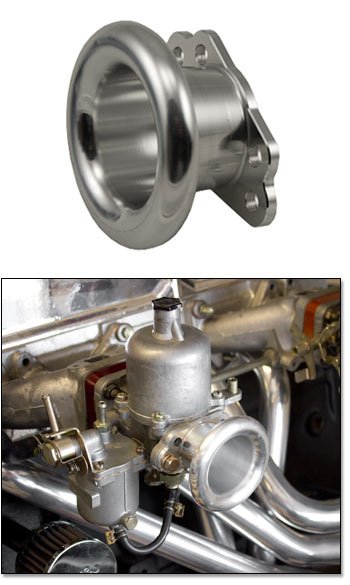
The DCOE ones below on eBay are actually fully radiused and made from a single billet. But with 65mm centres, they won't bolt up to the HS6 72mm centres. Having said that, I have a custom backplate for my plenum whereby I can add North-South (or at 45 degrees) studs to make them fit. I would also have to open / taper the carb mouths, or in fact the backplate holes, by about a mm to avoid a "step" into the carbs. Why am I sharing all this nonsense? Well, I thought it may be of interest to anyone else sporting HS6 carbs on their 6, with an unhealthy airflow obsession and going through my current dilemma
 . Also hoping that someone will slap me and tell me to go to "Harry in Devon" who makes them for BL cars
. Also hoping that someone will slap me and tell me to go to "Harry in Devon" who makes them for BL cars 
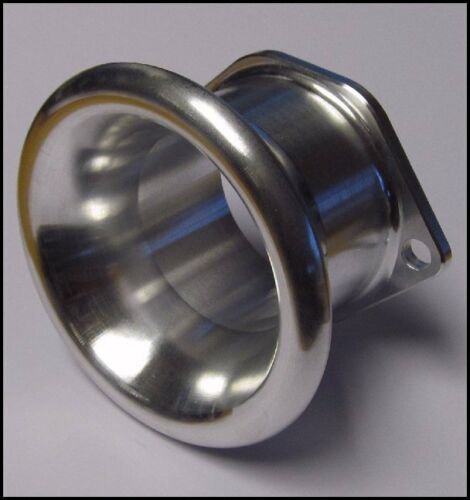
-
To bring the thread back on track before I upset moderators too much
 - Mark of Enginuity saw my BIL last night and instantly knew what was wrong: Injector no.2 is dead. The poppet valve (is that what you call it?) at the end has no spring and can be pulled out easily by hand, therefore just dribbling fuel instead of atomising. As already mentioned above by @Steves_TR6 , Mark also thought the car had too much timing.
- Mark of Enginuity saw my BIL last night and instantly knew what was wrong: Injector no.2 is dead. The poppet valve (is that what you call it?) at the end has no spring and can be pulled out easily by hand, therefore just dribbling fuel instead of atomising. As already mentioned above by @Steves_TR6 , Mark also thought the car had too much timing.
With the wonders of modern tech, otherwise known as FaceTime, I walked my BIL through using a timing light and we determined that all-in, the dizzy was hitting the poor car with 37 degrees! So we dialled it back to a safe 27/28 degrees@3.5Krpm. It may seem conservative but I'm not familiar with TR nuances and not entirely sure what a "stage 3 head" means! Is it a port and polish or the full works with enlarged valves, raised compression etc.? I therefore thought losing a few degrees below optimal power will keep him on the safe side and allow headroom for poor quality fuels he may be limited to at some point on the road. Lo and behold, no more popping through the inlet on blipping. The idle settled to around 12 degrees at 850-900 rpm (the timing light pickup was noisy so it was jumping about a little at idle).
When he was up here yesterday, I didn't get to properly test the car, as we spend 90% of our available time troubleshooting dodgy earths, an intermittent brake light switch and renewing crusty spade connectors. At least now he has headlights, tail / brake lights which work again and are much brighter. But now I wish I had gone over the dizzy properly - I feel a little foolish there.
As for Enginuity and Mark - WHAT AN ABSOLUTE TOP MAN!!! He is sorting BIL out with a recon injector after work this evening, so he should be driving again at the weekend. Honestly, it is so very nice to find people who are knowledgeable, helpful and delight their customers. He just gained two very loud advocates and a customer for life!
I will update you in due course as to the full outcome of the car's troubles.
Now to go back off track and onto carbs!

Thanks gentlemen for sharing your thoughts! This is really interesting stuff to read!!! I recall as a child in the 70s watching my father for HOURS dismantling and rebuilding carbs, but in all honesty, no matter how much I feel I know, every day is a school day! VERY VERY interesting to read your findings on the "Vizzard" mods. It is, as you say, COMPLETELY counter intuitive.
Here's a slowed down video of my carb standoff, which I thought some of you may find interesting. After installing a new exhaust system with larger equal length primaries, I'm sporting two noticeable torque holes at 2.1K and 3.2K rpm (after which it's just woaaaaaaaaah to the 6.8K limiter). So I was investigating the piston position at different revs/MAP (I strongly suspect the primaries are just that little bit too large and I will have to revert to the old one). My timing light rev counter wasn't playing ball though and I never got the time to repeat it with a proper chronometer installed in the view of the webcam. I had marked the piston at 3mm intervals which also washed off rather quickly with standoff juices. Anyway, I thought this may be an interesting video even if not on a TR engine; the principles are the same regardless.
Also if it is of interest, here's my thread on playing with the SUs and my spreadsheet modelling of needles. It's a little out of date now but it may make for some entertainment if you are bored.
On inlet tract tuning: permit me to caution against buying the ITG trumpets for HS6 carbs - I found them to make the car feel flat EVERYWHERE in the rev range. Not only are they extremely poor quality / poorly finished, but the opening is 40mm v the Hitachi SU (HS6 based) carbs that are 44mm. So it felt like going a carb size down!! Not to mention the dreadful step inside the opening (visible in the photo) that causes more turbulence just before the carb mouth. To their credit, Merlin Motorsport are willing to refund without a single word of quibble and a year after my purchase.
I have learned that much of classic car ownership, for many, is about things "looking good" and / or being "shiny" - and they do "look" good on the car.
So I do wonder how many people have thought "Ooooh shinyyyyy", installed them as open trumpets for sound / looks and in the process lost power / economy!? What percentage of owners take out their callipers and think to themselves, "I wonder"!? I knew they were a little restrictive just by looking at them but I hadn't realised just how much! Either way, I wanted to test them out and see the effect given they are twice the height of stock trumpets. Now I'm about to spend $120 on a fully radiused set made for these carbs in the US. Unlike you very fortunate TR owners, there isn't a UK / European network of new parts for us "ricers".
In fact, are you chaps aware of a supplier of fully radiused SU / HS6 trumpets in the UK which google hasn't shown me yet?
Thank you again for your support and insights!
Ali
-
Thank you gentlemen, much appreciated.
Steve, I will be sure to check that. It's interesting how engines can be so different, the Datsun LOVES timing. It idles at 17, with 34-36 all-in being plenty safe on RON 95 - so I made a silly assumption that 17 was also OK on the 6. I guess head design, compression, cams etc all play their parts. I replaced my 40+ year old one with an ATi Super Racing damper, having 360 degree timing marks - if it's acceptable in TR circles, I recommend it, it's a fantastic bit of kit.
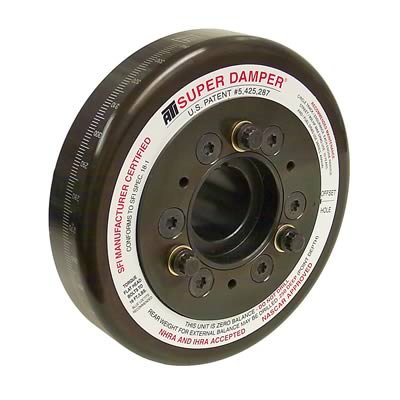
Stuart, thank you for the recommendation. I just discovered that, coincidentally, my brother-in-law spoke with them today. He was mightily impressed with their client centric / friendly approach. So it's great to hear them being called out here also.
Peter - thanks for that, it's a good method. Oh and for the link. I was just reading your presentation on ‘mixture spread‘. Great to find people that truly understand SUs. I see so many cars on carbs that aren't properly tuned or over-carbed, but I guess the common understanding of carbs has been in decline with modern EFi coming to the fore. We could speak for days on this topic!! My new bad obsession is Inlet tract tuning to take advantage of the pulses
 . That and doing some Vizzard style mods to my spare SUs - would love to hear your thoughts are on SU modding (and I am conscious I'm taking my own thread way off topic now, so maybe in a new thread then). Here's something I took off 'tinter and started scribbling on - I can't take credit for the photo. It's from a chap in Lancashire who does these mods commercially.
. That and doing some Vizzard style mods to my spare SUs - would love to hear your thoughts are on SU modding (and I am conscious I'm taking my own thread way off topic now, so maybe in a new thread then). Here's something I took off 'tinter and started scribbling on - I can't take credit for the photo. It's from a chap in Lancashire who does these mods commercially.
-
Hello all,
In the words of Austin Powers, allow myself to introduce, myself:
Smooth, handsome and wealthy, with a penchant for exotic cars. Well, that’s quite enough about 007. As for me, I’m a highly mechanically competent privateer with an unhealthy obsession for carbs and extracting every last pony out of vintage cars.* In short, a middle aged man in suburbia, living the dream!
I’m currently helping my BIL with the challenges bestowed upon him by his gorgeous TR6 PI running the Lucas Injection system - which I have been learning a lot about of late.
Here’s a great read that I’m certain is old hat to the 6-enthusiast.
http://www.lucasinjection.com/index.html
The car was running beautifully but then began having issues starting and bogging down / fouling plugs / stalling.
We identified the MU as the underlying issue which was sent away and rebuilt by an expert. But sadly the garage who fitted it for him haven’t dialled it in on a RR or with a gas analyser. I cannot imagine it’s set up correctly for the car. Frankly I don’t believe they understand it well enough and gave it their best shot.Since getting it back from the garage the car is running very rough, popping through the intake when blipped and slightly reluctant to rev / down on power. Doing the old school test: WOT then turn engine off and into neutral / coast to the side of the road, the plugs look lean to me. I can even smell the leanness - anyone else sad enough to know that smell? So potentially we have two issues of mix and injection timing both being off. If it was on multiple carbs I would say it’s akin to them being out of balance and overly lean.
The car is on electronic ignition (no vac) with ROCK SOLID timing which I’ve checked - 17degrees @idle (850-900rpm) and maxing out at 27 @2.5k ish which was only as far as I took it to ensure it was sufficiently advancing. Plugs, leads, coil are all new. Cant recall the plug gaps but they are all even. Vac hose to MU is new, brake booster hose is good and there are no known false air sources / leaks. Butterflies balanced with air-flow meter.
We know the car has a stage 3 head (whatever that means) but not sure if the cam is totally stock. So next, I’m going to check the cam profile - using one DTI over the rockers and another I have which confirms TDC through the spark plug hole; it’s a very useful bit of kit.
So, now we have the long intro out of the way, please allow me to gain the benefit of your insights / experience:
1. Firstly, does anyone know what the crank damper OD is on these cars? I need to get stick on 360degree marks to be able to properly check the cam profile / LSA / lift / etc with the DTI and a spreadsheet.
2. I read everywhere that the voodoo magic of the MU is not to be touched by mortal hands, otherwise we shall all perish - most horribly!!! So are there any recommended garages in the South East (or even up to the Midlands) whom we trust with good knowledge of dialling in MUs / understand Lucas injection system well?
3. Let’s be controversial - is it really beyond the wit of man to adjust the 3 rings of the MU with an o2 sensor / AFR gauge and get it right? Seriously, I don’t see any magic in the schematics. Except for setting up the correct injection timing, it doesn’t “look” any more involved than setting up triple DCOEs!! Am I missing something?
I’d be most grateful for your kind advice / pointers.Thanks in advance,
Ali
Ps. *My NA Datsun Z on twin 1.75” SUs (with custom needles) is currently doing 245BHP @6.5k and low 13 quarter miles; now tell me “them SUs just won’t flow” ;)! Oh and with two TRs in the family we regularly talk about my Jap-*rap!! So feel free to have a good dig, my skin has been somewhat thickened!

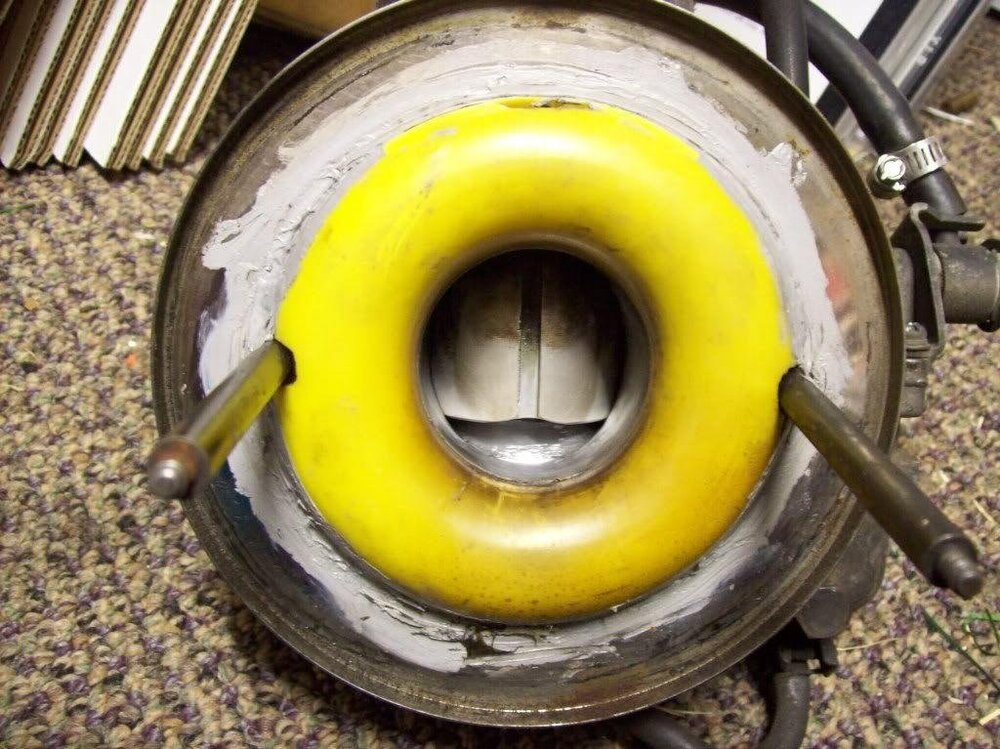
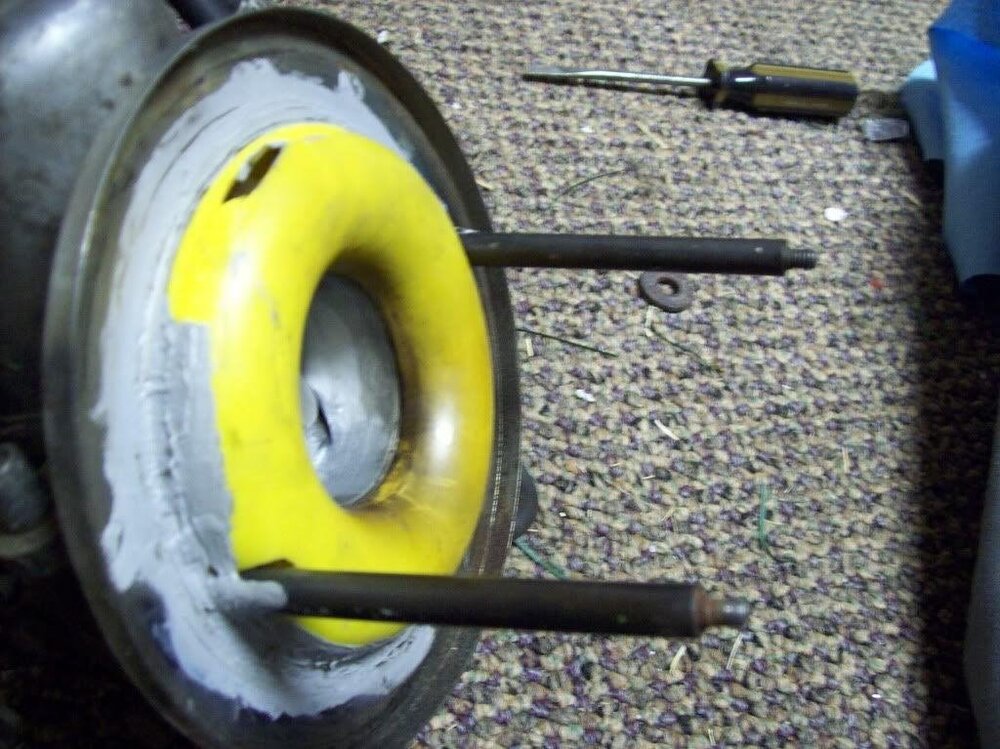
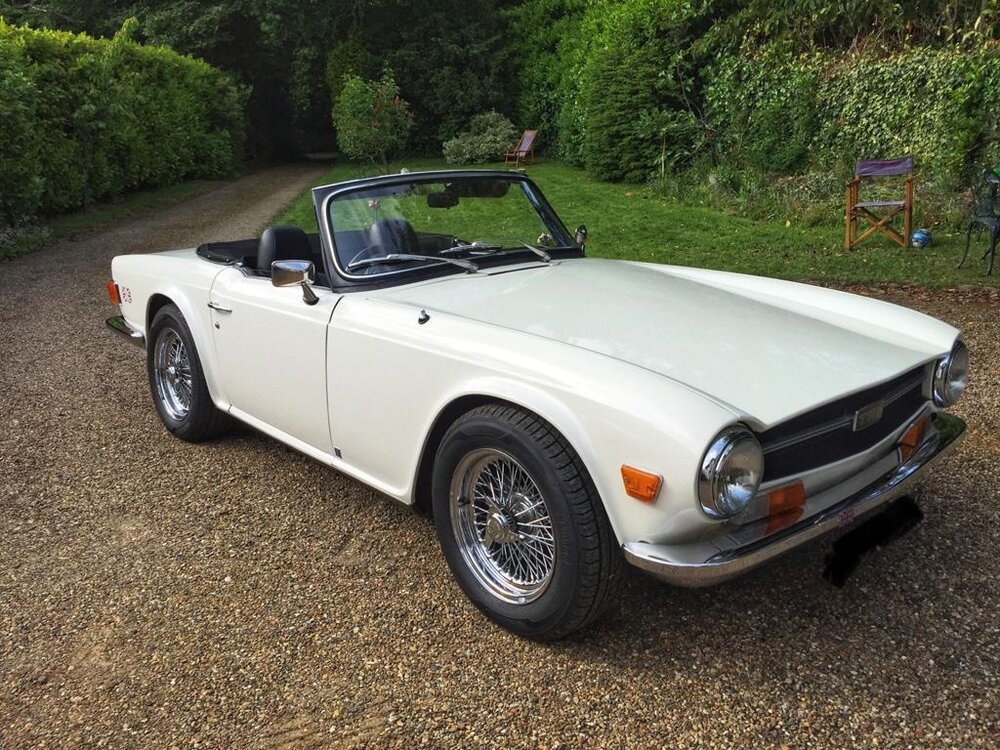
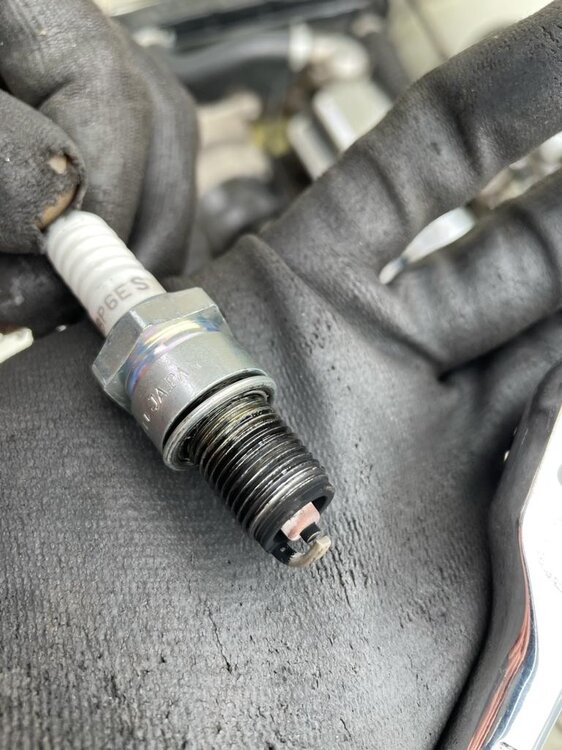
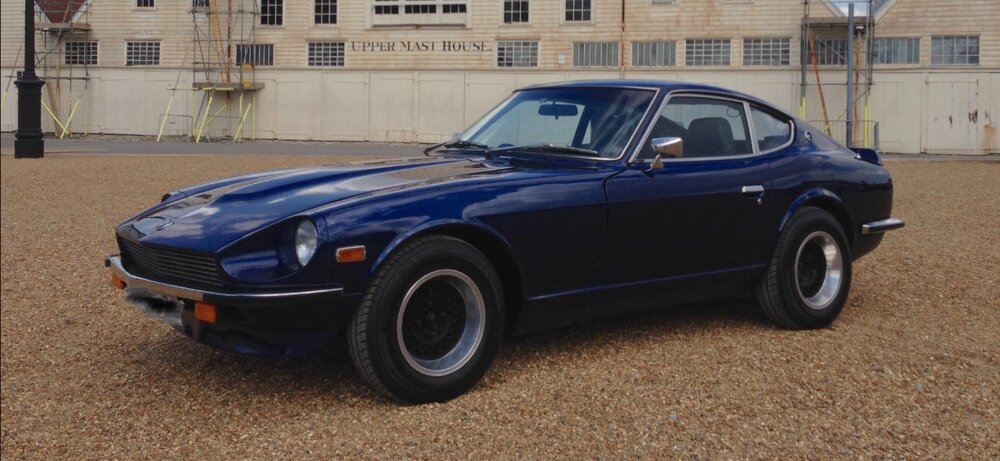
A TR newbie - rough running.
in General TR Technical
Posted
Now you raise an interesting point there Peter. As you can see the intake manifold I have in the picture, I absolutely abhor the asymmetry and the paths to cyl 2 and 5!
There is a balance tube on these but changing the size is frankly a fabrication nightmare!
I think I read somewhere that Mr Vizzard didn’t like balance tubes - so I was considering blocking mine off with a home made blanking gasket to observe the effect it has - am I about to commit a sin?